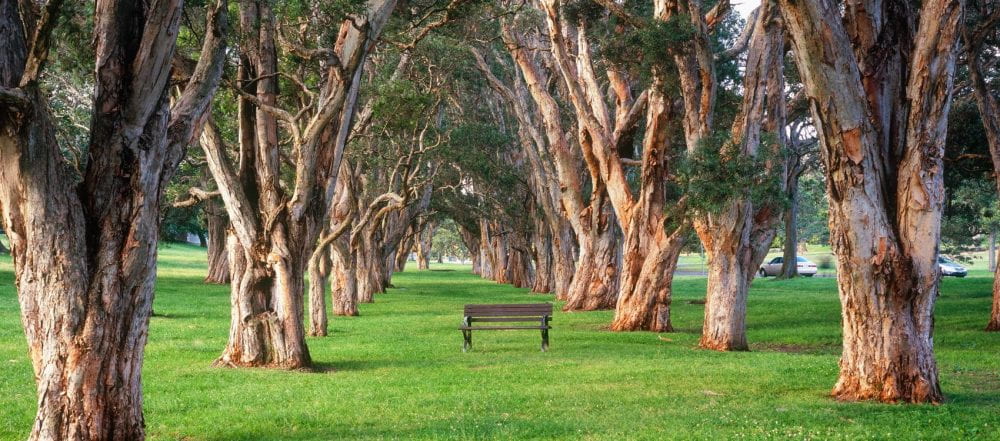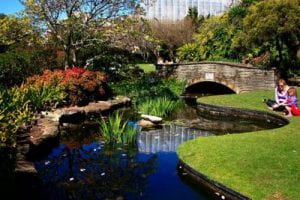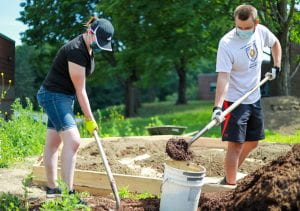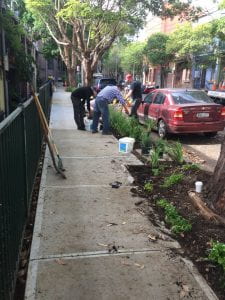Sydney, Australias Greening plan acknowledges how urban forests are a vital role in the health and social framework of the city. Creating vegetation in the city improves air quality, soil, and water but also improves the individual mental health and wellbeing of city dwellers to create a happy and healthy city. Mumford’s book, The Culture of Cities, highlights the social problems urban cities create for many members of the community. Mumford mentions how urban cities increasing population and industrialization left many city members without “most elementary facilities for urban living, even sunlight and fresh air (26).” Sydney’s greening plan was created to restore health and community back into urban areas, to benefit individuals’ wellbeing and the environment.
Sense of Place
Many people who live in cities may claim they lost their sense of place or feel a disconnect between themselves and nature. To help bring communities together and connect with nature, Sydney, Australia’s greening plan focuses on creating community work to help improve the environment of the city and also the well-being of the people who reside in it by creating social opportunities. One aspect of Sydney’s Greening plan is the public domain, which focuses on greening to provide quality streetscapes and public spaces throughout the city. Providing green areas will allow for individuals to move around the city and connect with others in an open space. Greening local streets and parks can improve the health of others by providing more opportunities for social events and areas for play and exercise. Sydney’s Greening plan also mentions the City Living Colour program which provides annual flower displays and hanging baskets in areas that cannot provide permanent landscaping to improve the display of the city but also incorporate nature by using sustainable materials.
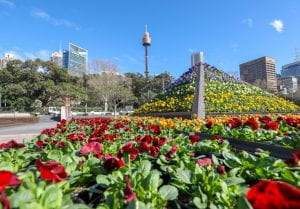
Sydney – 13th September 2019. Sydney’s streets blossom with vibrant floral displays as part of the City’s Living Colour extravaganza. Photo by Katherine Griffiths
“The City has street tree planting and public domain landscaping programs which have seen over 7,500 street trees and 28,000 square metres of landscaping installed throughout the City’s streets.”
To further my individual research, I interviewed Lydia Silva, a permaculture and sustainability professor at the University of Massachusetts-Dartmouth, Suffolk University, and Roger Williams University, emphasizes the key importance when building green spaces in urban areas is creating a sense of community and connection for city members.
“It’s actually a basic human need, to be a part of something meaningful. I think these types of spaces, and opportunities give people this idea and some demonstrations of ways that they can be more sustainable in their lives, that they can grow edible landscaping, that they can create habitat for wildlife like it’s empowering. I think it’s very empowering for people as well.”
She goes even further to describe how many people in cities lose their sense of self and connection to nature, but implementing green spaces in urban areas can bring community members back to their true natural selves.
“So there’s an opportunity for educational programs, there’s an opportunity for events, there’s an opportunity for just bumping into people because you’re in the green space together. I think those are really underrated. But really important things in our society that we’ve really lost our sense of connection, I feel like we’ve lost our sense of connection to ourselves, we’ve lost our sense of connection to the landscape to the place that we are.”
Community Involvement
Empowering the community to assist in the delivery of greening programs and to get involved is one of the many visions for the greening of Sydney. This will benefit individuals by working together on meaningful projects but will also help strengthen the urban forest and landscape by helping maintain green spaces. Community engagement can expand the capacity and type of greening outcomes for the city by working together and collaborating ideas on meaningful projects. An increase in the number of community volunteers and volunteer groups can help expand programs, create more habitats, and enhance activities throughout the city.
Permaculture and sustainability professor, Lydia Silva stated “we’re lost, we’re very isolated, we’ve lost our sense of connection to each other too. And it’s very sad. And there aren’t really that many things that will bring people together, the way that a beautiful, natural green space will bring people together and will change the energy and the perspective of people.”
Sydney’s greening plan goals are to build a sense of community for everyone in the city. The plan mentions building community gardeners to support residents in sustainable food production, developing a Junior Ranger program to encourage children to get involved in greening by managing and monitoring the cities’ urban parks and landscapes, and also establishing a City Farm Sustainability Learning Centre. Community greening can influence city members to become involved in the greening of the urban landscape in their communities but also can educate individuals on the importance of greening and sustainability. Working with others on influential causes can help improve the social and mental well-being of city dwellers and help individuals slow down, connect with nature, and take a break from rushing around the busy city.
